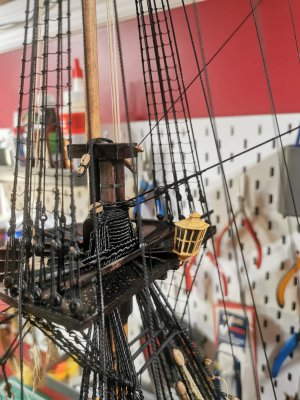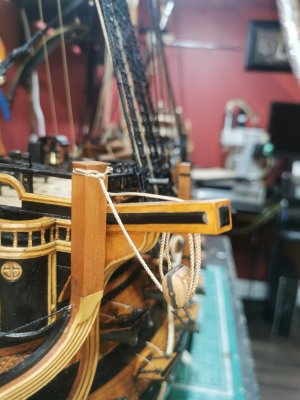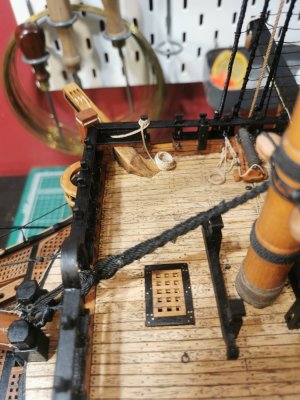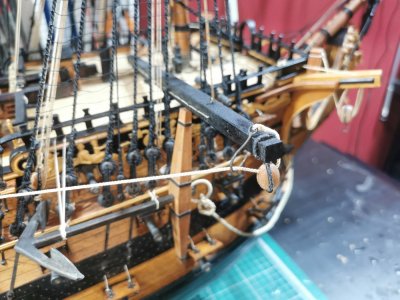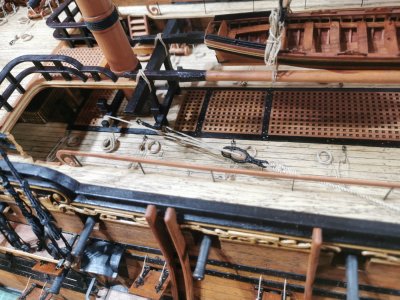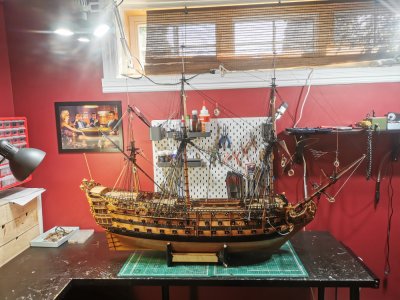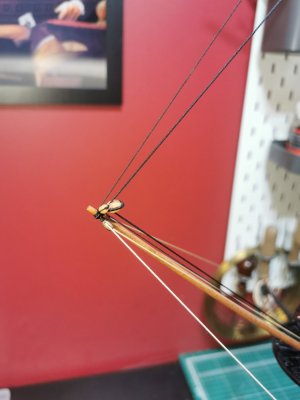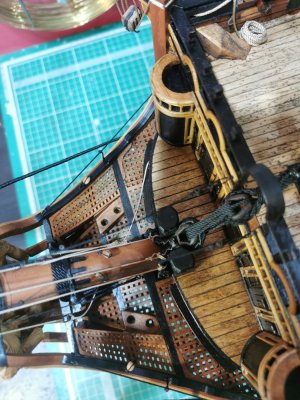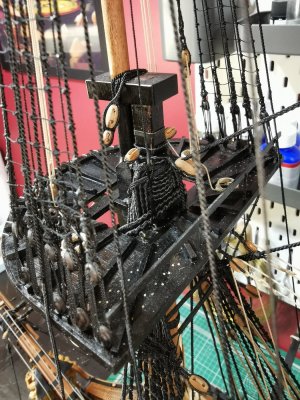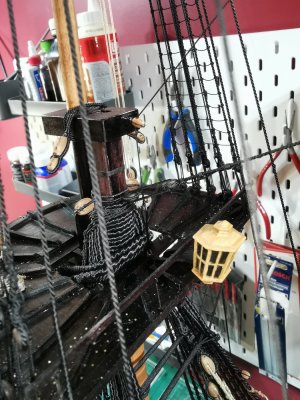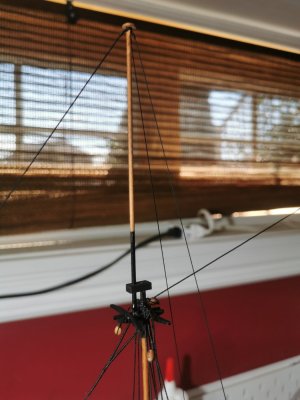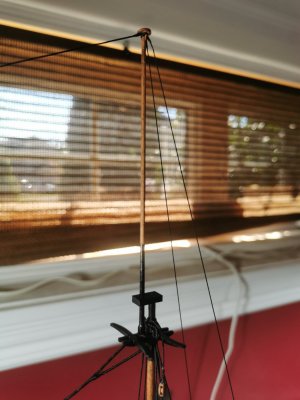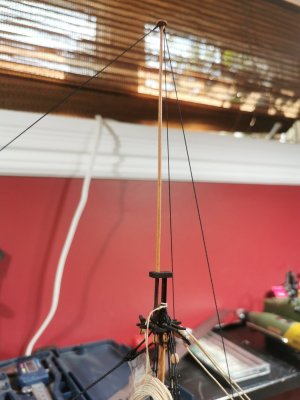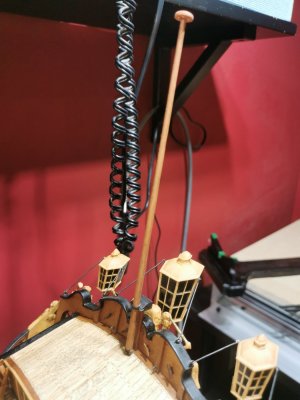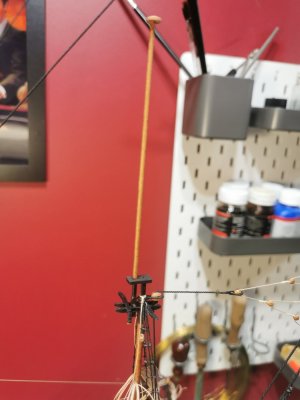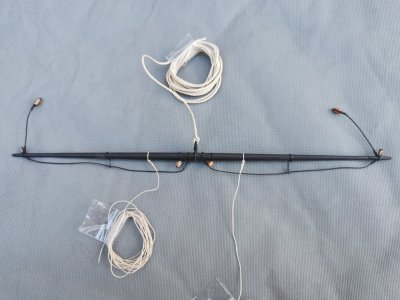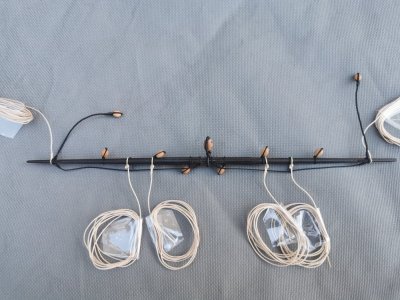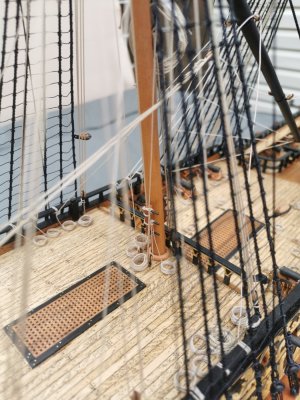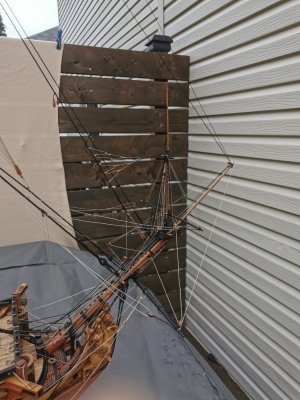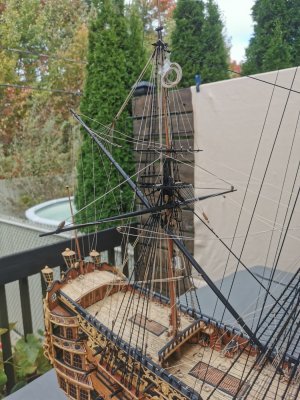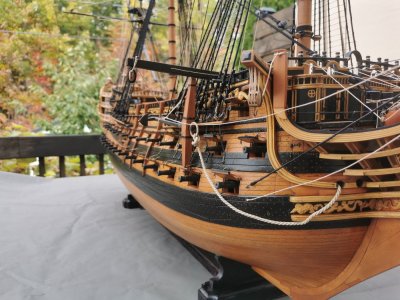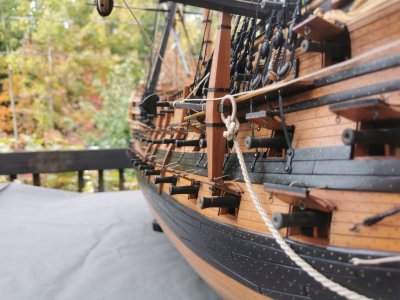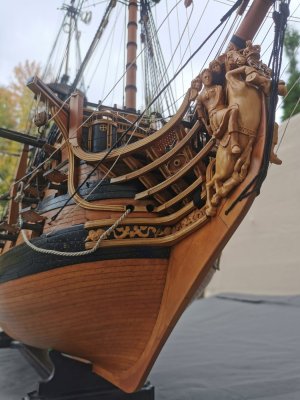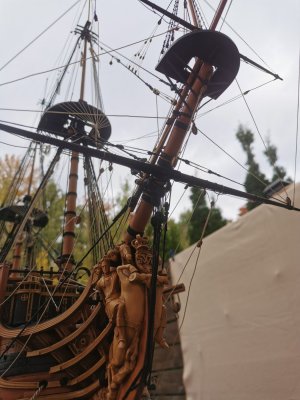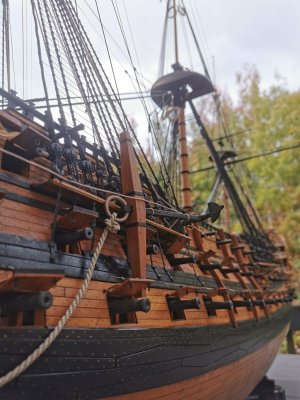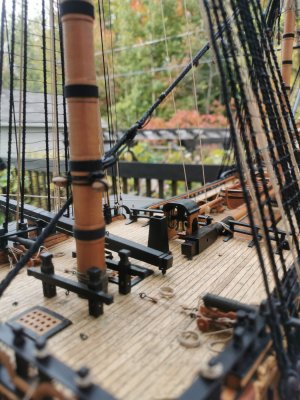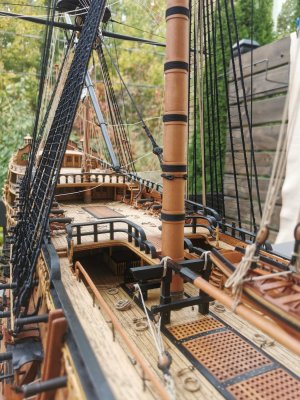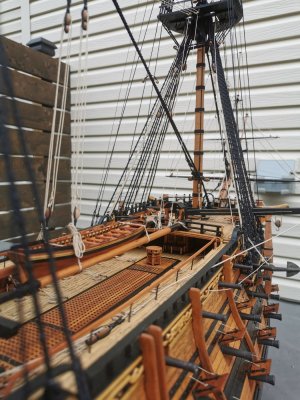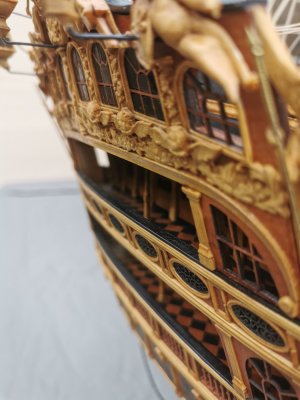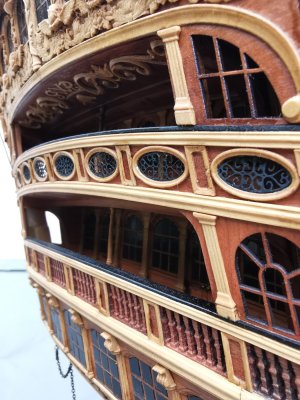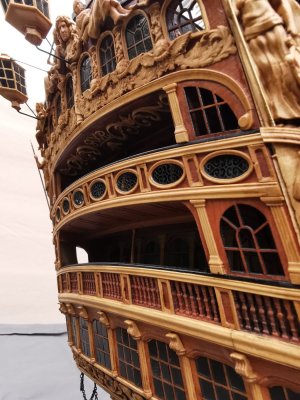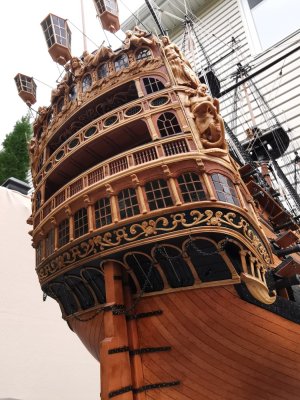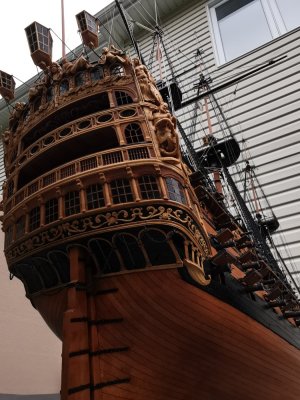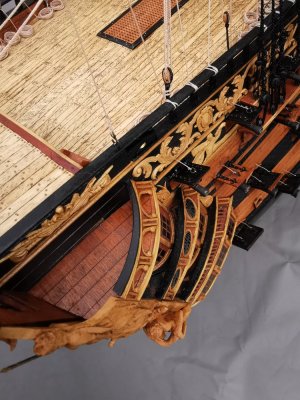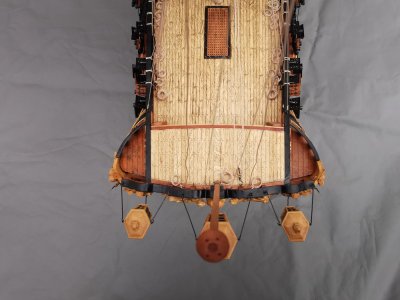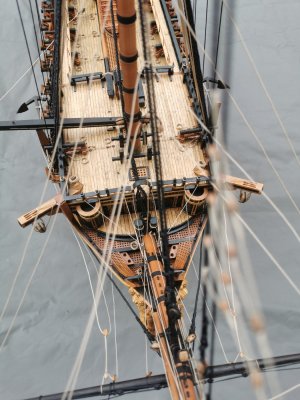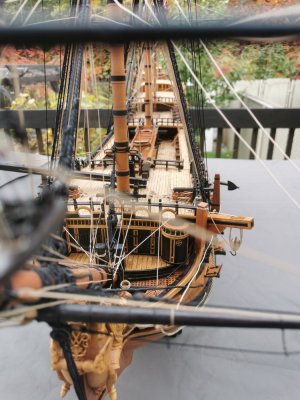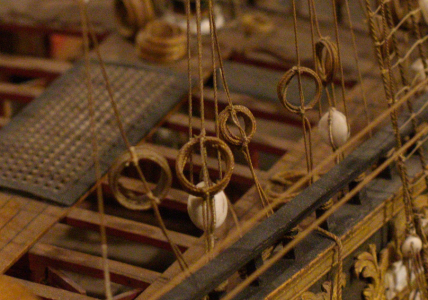-

Win a Free Custom Engraved Brass Coin!!!
As a way to introduce our brass coins to the community, we will raffle off a free coin during the month of August. Follow link ABOVE for instructions for entering.
You are using an out of date browser. It may not display this or other websites correctly.
You should upgrade or use an alternative browser.
You should upgrade or use an alternative browser.
Great to see the tackle for the fish davit - Bravo - a details which is not often shownCat tackles, fish tackles and a lantern on the maintop
View attachment 474526View attachment 474527View attachment 474528View attachment 474529View attachment 474530
I am a big fan of your work
Notes to standing rigging.
My 2 sources were RW model in USNA and Anderson's book Seventeenth Century Rigging. In case of discrepancies between them (and there were some) I sticked to the book. I'm not showing the lower catharpins and the ropes linking lower stays with preventer-stays together (snaking). They were installed "sometimes", so I consider them as "omitted" on my model, even if they existed on this ship - in the same manner as I will omit reef tackles or studdingsails rigging. And of course I'm not showing the tackles to raise the topmasts (unfortunately I don't know the English term), as they were removed once not needed (although they are shown quite persistently on the contemporary models).
As with many other details, 4 RW models and 2 drawings all show different sets of deadeyes on the channels. I think I developped a set close to that of the USNA model, however, with some differences. The model in the museum shows 3 topmast backstays and 2 topgallant backstays (or 4 topmast backstays and 1 topgallant backstay - it's really hard to distinguish). There's no flagstaff(royal) backstays/stays. There are a lot of museum models that do not have them, but there are some that do have. Here are 2 examples, one of which is RW:
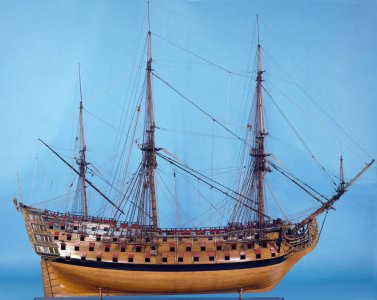
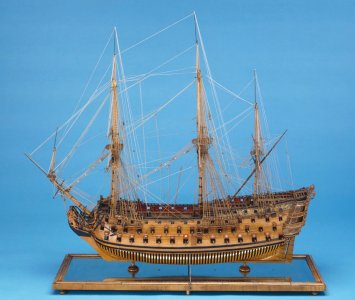
My decision was to show them, so my installation transformed into 3 topmast backstays, 1 topgallant backstay and 1 flagstaff backstay, plus corresponding flagstaff stays.
My 2 sources were RW model in USNA and Anderson's book Seventeenth Century Rigging. In case of discrepancies between them (and there were some) I sticked to the book. I'm not showing the lower catharpins and the ropes linking lower stays with preventer-stays together (snaking). They were installed "sometimes", so I consider them as "omitted" on my model, even if they existed on this ship - in the same manner as I will omit reef tackles or studdingsails rigging. And of course I'm not showing the tackles to raise the topmasts (unfortunately I don't know the English term), as they were removed once not needed (although they are shown quite persistently on the contemporary models).
As with many other details, 4 RW models and 2 drawings all show different sets of deadeyes on the channels. I think I developped a set close to that of the USNA model, however, with some differences. The model in the museum shows 3 topmast backstays and 2 topgallant backstays (or 4 topmast backstays and 1 topgallant backstay - it's really hard to distinguish). There's no flagstaff(royal) backstays/stays. There are a lot of museum models that do not have them, but there are some that do have. Here are 2 examples, one of which is RW:


My decision was to show them, so my installation transformed into 3 topmast backstays, 1 topgallant backstay and 1 flagstaff backstay, plus corresponding flagstaff stays.
I’ve seen many impressive models, and this is one of them. You could spend hours looking at the details and components. I would love it if you could share more about creating complex assemblies, joints, and other details. Keep it up, I’ll be following your build!
- Joined
- Apr 20, 2020
- Messages
- 6,177
- Points
- 738

the first oneGuys, three options I see. Which one do you think is the best?
The forward anchor will be fished.
View attachment 474304View attachment 474305View attachment 474306
you are doing wonderful work on this model, well done my friend
Took out the ship today to make some photos. Mizzen mast and bowsprit are all done.
Some notes about the jib and fore topmast staysail: according to Anderson, their installation in this period, when the jib and jibboom have just being invented, is not really clear. So he is giving some very, very general and vague description, which, first of all is not enough for a good reprodcution in my point of view, and then it is not aligned with what I see on the USNA model. The museum model is showing a ring traveller on the jibboom, while according to Anderson, it yet didn't exist during this early period. The installation of the fore topmast staysail is not much more clear and straight-forward. So I decided to not do any historical nonsence and not show these 2 sails. In any case they are not somewhat a must-have: if someone wants to show them, then why only them and not all other stay sails?.... Me, however, I showed 2jibs on my Bonhomme Richard, but not the fore topmast staysail. Anyhow....
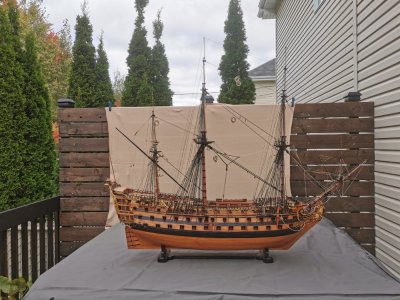
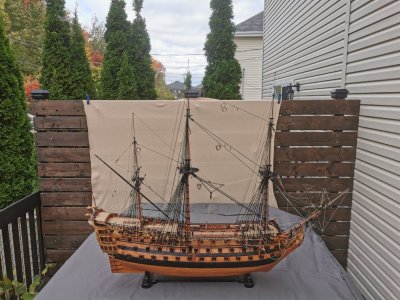
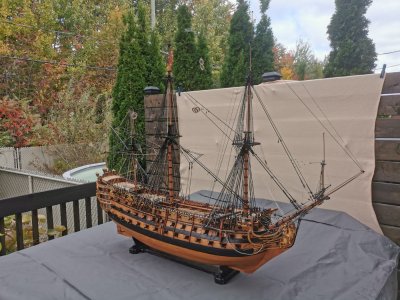
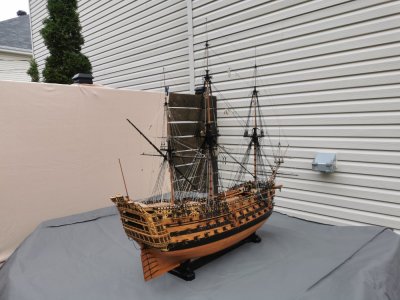
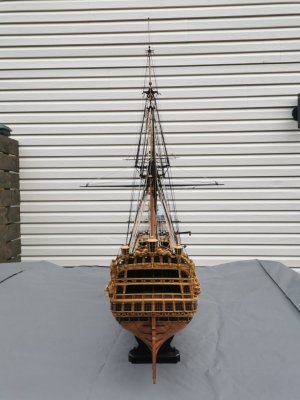

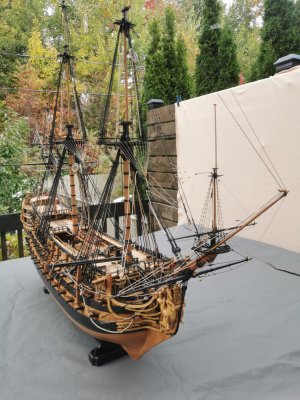
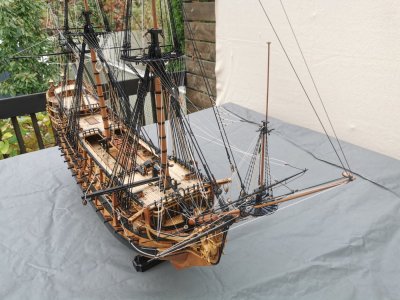
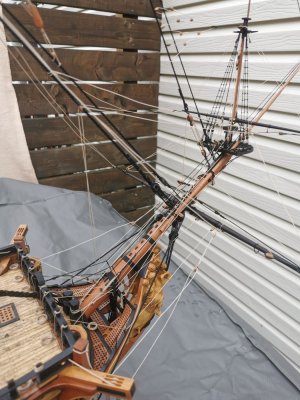
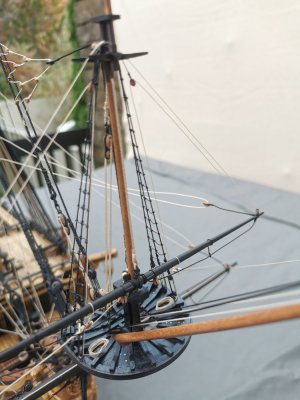
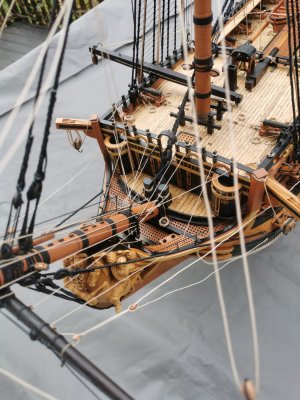
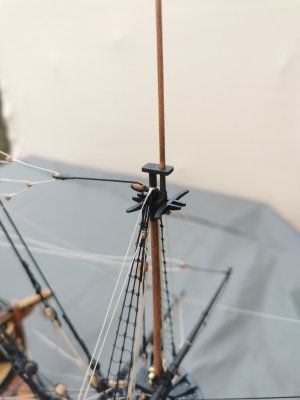
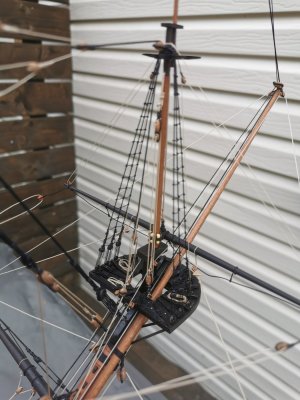
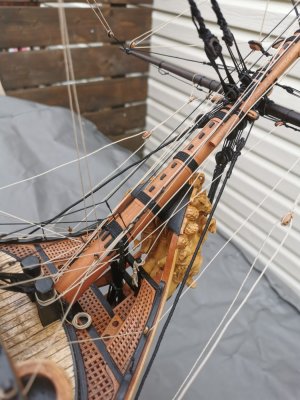
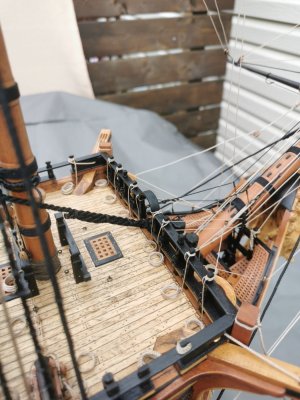
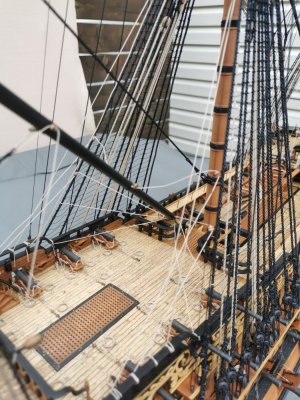
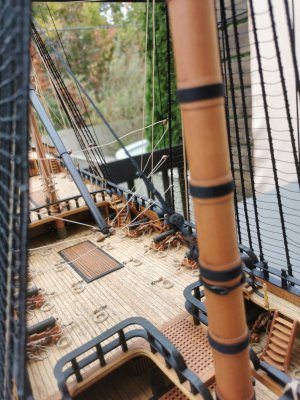
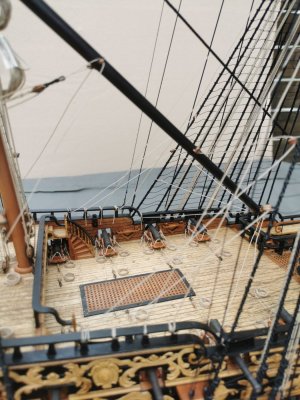
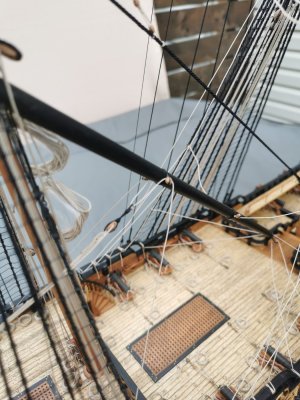
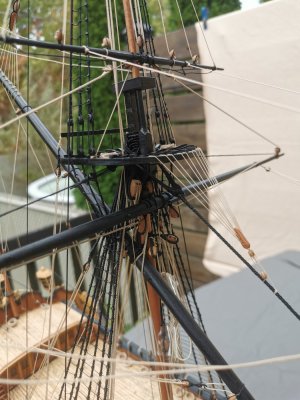
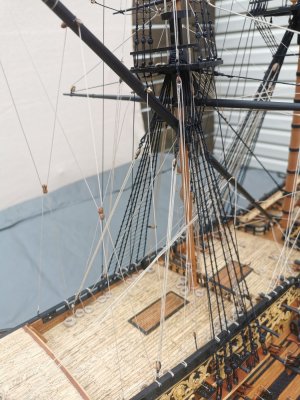
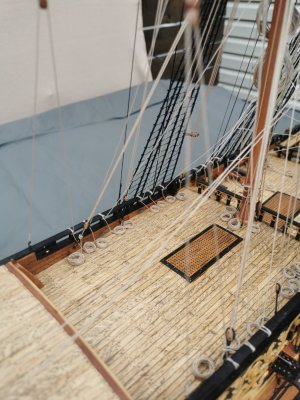
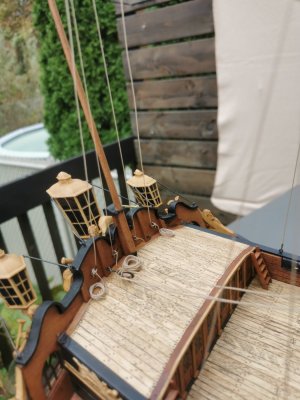
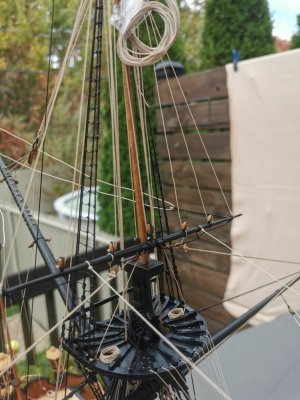
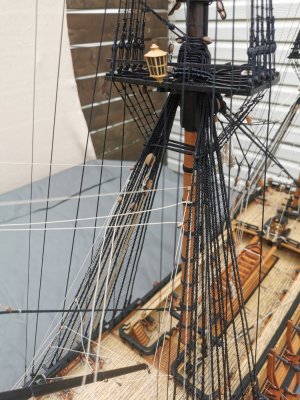
Some notes about the jib and fore topmast staysail: according to Anderson, their installation in this period, when the jib and jibboom have just being invented, is not really clear. So he is giving some very, very general and vague description, which, first of all is not enough for a good reprodcution in my point of view, and then it is not aligned with what I see on the USNA model. The museum model is showing a ring traveller on the jibboom, while according to Anderson, it yet didn't exist during this early period. The installation of the fore topmast staysail is not much more clear and straight-forward. So I decided to not do any historical nonsence and not show these 2 sails. In any case they are not somewhat a must-have: if someone wants to show them, then why only them and not all other stay sails?.... Me, however, I showed 2jibs on my Bonhomme Richard, but not the fore topmast staysail. Anyhow....

























WOW! Beautiful work.
Bill
Bill
WOW, amazing detail in everything!! Rigging, carvings, treenails, gratings, lanterns, windows, EVERYTHING is simply amazing. Thanks for sharing such wonderful work, with such great photographic detail.
I'm speechless.
Very beautiful model. The detailing is unreal, keep it up! Looking forward to new updates!
wonderful model - Bravo
Good decision to make these photos outside without artificial light - very good colours
Good decision to make these photos outside without artificial light - very good colours
Your model is absolutely beautiful. There are too many things to point out that are extremely well done, but one that struck me is the belaying. As this ship is British and was launched in 1719 the lines would be belayed just as you show them, without belaying pins. Kudos for your accuracy!!! The below photo of the one that you had posted above is a clear picture of what I mean on how the lines were belayed at that time and it is so nice to see it done accurately. Fantastic work Oleg
Allan

Allan

Very beautiful model. The detailing is unreal, keep it up! Looking forward to new updates!
Дякую!
It would make sense to coil them off of the deck. Another interesting thing is how the ropes are secured. Some are on the rail, others around the top of the top timbers that support the rail if there are not timberheads and others secured around timberheads when they are present. I have also seen photos of contemporary models where the line is wrapped around the rail as you show on your model, so I am guessing there was not a single way that was done. The following is a photo that I took at Preble Hall at the USNA showing the lines secured to the timberheads and rail. I wish I had taken a 1000 photos then and more closeups. At least all volumes of Grant Walker's book are now available.however, the way the ropes were coiled, may have been different, and my representation may still not be true. Here is how it is done on the USNA model:
Allan
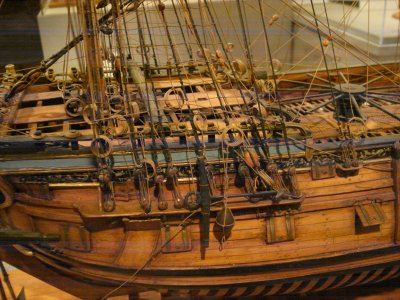
Last edited:


